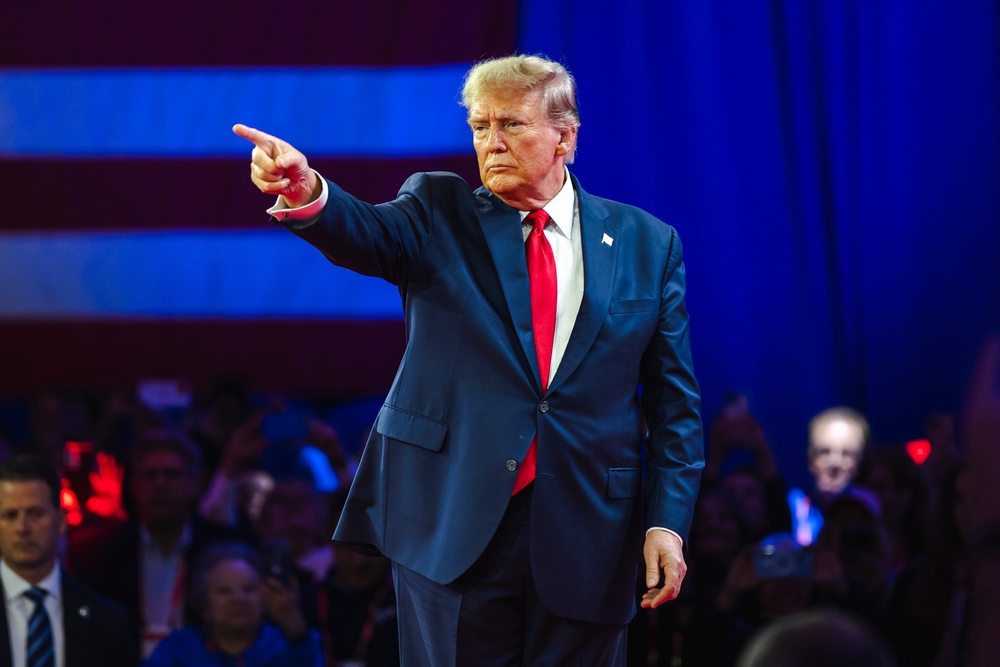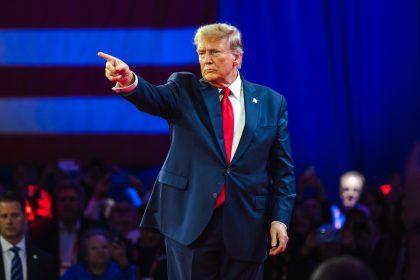Wall Street woke up Friday morning feeling like it’s waiting for the other shoe to drop, and that shoe happens to be a potential military strike that may or may not happen in the next two weeks. Stock futures slipped into the red as President Trump announced he’s hitting the pause button on direct U.S. action against Iran, creating the kind of uncertainty that makes traders reach for their stress balls and investors question every portfolio decision.
The numbers tell a story of cautious pessimism with the S&P 500 down 0.2%, the Dow off 0.15%, and the Nasdaq sliding 0.3% in pre-market trading. These aren’t dramatic moves, but they reflect the market’s general discomfort with geopolitical situations that could explode into something much bigger at any moment.
What’s particularly unsettling for markets is that Trump’s two-week delay doesn’t resolve anything – it just creates a ticking clock that everyone can hear but no one knows when it will go off. This kind of suspended animation is exactly what financial markets hate most, because it makes every other economic factor feel secondary to whatever might happen in the Middle East.
The uncertainty premium that’s taxing everything
Markets can actually handle bad news pretty well once they know what they’re dealing with. What they struggle with is the limbo of not knowing whether they should be pricing in a regional conflict, oil supply disruptions, or a peaceful diplomatic resolution. Trump’s delay creates a scenario where every possible outcome remains on the table, making it impossible to calculate risk accurately.
The two-week timeline means traders have to factor in potential volatility for the immediate future while trying to maintain positions that make sense regardless of whether diplomatic efforts succeed or military action proceeds. This creates a risk premium that gets baked into everything from oil futures to defense stocks to broad market indices.
Investors are essentially paying an uncertainty tax right now, where asset prices reflect not just current conditions but also the possibility of dramatic changes that could happen at any moment. This premium makes everything more expensive to hedge and more difficult to value accurately.
The oil price rollercoaster nobody wanted to ride
Oil markets are having their own emotional breakdown over the Iran situation, with prices swinging based on every piece of news or speculation about potential conflict escalation. The commodity had risen earlier in the week on fears of supply disruptions, then dropped 2% after Trump’s postponement announcement as traders recalibrated their risk assessments.
The problem with oil price volatility during geopolitical crises is that it affects everything else in the economy. Transportation costs, manufacturing expenses, and consumer spending all get impacted by energy price swings, creating ripple effects that extend far beyond just energy sector investments.
Oil traders are now stuck in a position where they have to guess not just about supply and demand fundamentals, but also about the likelihood and timing of military actions that could disrupt major production regions. This guessing game creates the kind of price volatility that makes long-term planning nearly impossible for businesses that depend on stable energy costs.
The safe haven rush that reveals real anxiety
When investors start piling into gold and U.S. Treasury bonds despite low yields, it’s a clear sign that they’re more worried about preserving capital than generating returns. The demand for these traditional safe haven assets reveals just how nervous people are about the potential for rapid escalation in Middle East tensions.
Gold prices staying elevated and Treasury bonds remaining in demand despite their poor yield environment suggests that professional investors are genuinely concerned about the possibility of broader conflict that could disrupt global trade and financial stability. This isn’t just day-trader nervousness – it’s institutional money seeking protection.
The flight to safety also indicates that investors don’t trust the current calm to persist. When smart money is paying premium prices for assets that only perform well during crises, it suggests that the market collectively believes crisis conditions are more likely than peaceful resolution.
The defense stock dilemma that’s splitting portfolios
Defense contractor stocks are caught in a weird position where potential conflict could boost their business prospects while broader market turmoil could hurt their valuations along with everything else. Investors trying to hedge geopolitical risk through defense stocks are discovering that this strategy has its own complications.
The ethical considerations of profiting from potential military action are creating additional complexity for investors who want portfolio protection but don’t want to be seen as betting on warfare. This moral dimension adds another layer of difficulty to investment decisions during geopolitical tensions.
Defense stocks also face the risk that diplomatic resolution could deflate the premium that’s been built into their prices based on conflict expectations. This makes them unreliable hedges that could lose value regardless of how the situation resolves.
The macroeconomic backdrop that’s amplifying everything
The Iran situation is happening against a backdrop of existing economic headwinds including high interest rates, slower growth projections, and persistent inflation concerns. This combination means that markets have less resilience to absorb geopolitical shocks than they might have during periods of stronger economic fundamentals.
When the economy is already dealing with multiple stressors, additional uncertainty from geopolitical tensions can push investor sentiment from cautious to genuinely pessimistic. The cumulative effect of various risk factors creates conditions where relatively small triggers can produce outsized market reactions.
The Federal Reserve’s current monetary policy stance means that policymakers have limited tools to respond to market disruptions caused by geopolitical events, making investors feel more exposed to potential volatility than they would during periods of more accommodative monetary policy.
The diplomatic wild card that everyone’s watching
The two-week window for diplomatic efforts creates a parallel track of uncertainty where investors have to monitor not just military developments but also the progress and likelihood of successful negotiations. U.N.-backed talks and European diplomatic initiatives add variables that could resolve tensions or fail spectacularly.
Diplomatic efforts during high-stakes geopolitical crises have unpredictable timelines and success rates, making them difficult for markets to price in accurately. The possibility of breakthrough agreements or complete diplomatic failures creates additional scenarios that investors need to consider when making portfolio decisions.
The involvement of multiple international actors in diplomatic efforts means that successful resolution depends on coordination and compromise among parties with different interests and priorities. This complexity makes peaceful outcomes harder to predict and plan for than purely bilateral negotiations.
The summer of volatility that’s already being priced in
Market analysts are warning that this geopolitical situation could set the tone for months of increased volatility as other regional conflicts, economic data releases, and policy decisions get viewed through the lens of an already unstable international environment. Investors are mentally preparing for a summer where geopolitical headlines drive more market movement than traditional economic fundamentals.
The timing of these tensions during what’s typically a slower summer trading period could actually amplify volatility since lower trading volumes can make price movements more dramatic when they do occur. Fewer participants in the market means that geopolitical news can create larger price swings than during busier trading periods.
The psychological impact of prolonged uncertainty can also create self-reinforcing volatility cycles where investor anxiety about potential geopolitical developments creates market instability that justifies further anxiety. This feedback loop can persist even if the underlying geopolitical situation doesn’t escalate as feared.

















